L-甲状腺素钠盐五水化合物, 99%,L-Thyroxine Sodium Salt Pentahydrate
产品编号:西域试剂-WR119190| CAS NO:6106-07-6| 分子式:C15H10I4NNaO4·5H2O| 分子量:888.9299999999999
L-Thyroxine sodium salt pentahydrate (Levothyroxine; T4) 是一种合成的甲状腺激素,用于治疗甲状腺功能减退症。DIO 酶将 L-Thyroxine (T4) 转化成具有生物活性的三碘甲状腺氨酸 (T3)。
本网站销售的所有产品仅用于工业应用或者科学研究等非医疗目的,不可用于人类或动物的临床诊断或者治疗,非药用,非食用,
| 英文名称 | L-Thyroxine Sodium Salt Pentahydrate | ||||||||||||||||
|---|---|---|---|---|---|---|---|---|---|---|---|---|---|---|---|---|---|
| CAS编号 | 6106-07-6 | ||||||||||||||||
| 产品描述 | L-Thyroxine sodium salt pentahydrate (Levothyroxine; T4) 是一种合成的甲状腺激素,用于治疗甲状腺功能减退症。DIO 酶将 L-Thyroxine (T4) 转化成具有生物活性的三碘甲状腺氨酸 (T3)。 | ||||||||||||||||
| 产品熔点 | 207-210 (dec.)(lit.) | ||||||||||||||||
| 产品密度 | 2.381 | ||||||||||||||||
| 精确质量 | 888.721436 | ||||||||||||||||
| PSA | 141.76000 | ||||||||||||||||
| LogP | 3.60140 | ||||||||||||||||
| 外观性状 | powder | ||||||||||||||||
| 溶解性 | cell culture medium: 0.1 mg/mL | ||||||||||||||||
| 溶解性数据 | In Vitro:
DMSO : ≥ 28 mg/mL (31.50 mM) H2O : < 0.1 mg/mL (insoluble) * "≥" means soluble, but saturation unknown. 配制储备液
*
请根据产品在不同溶剂中的溶解度选择合适的溶剂配制储备液;一旦配成溶液,请分装保存,避免反复冻融造成的产品失效。 In Vivo:
请根据您的实验动物和给药方式选择适当的溶解方案。以下溶解方案都请先按照 In Vitro 方式配制澄清的储备液,再依次添加助溶剂:
——为保证实验结果的可靠性,澄清的储备液可以根据储存条件,适当保存;体内实验的工作液,建议您现用现配,当天使用;
以下溶剂前显示的百
| ||||||||||||||||
| 靶点 |
Thyroid Hormone Receptor | ||||||||||||||||
| 体内研究 | 催化甲状腺素(前激素)转化为活性甲状腺激素的脱碘酶(DIO)与促甲状腺激素(TSH)水平有关。与DIO3相比,DIO1和DIO2催化甲状腺激素分泌的激活,起到分泌失活的作用。 DIO1和DIO2的活性在垂体TSH分泌的负反馈调节中起关键作用。已知L-甲状腺素(T4)和三碘甲腺原氨酸(T3)激素调节离子通道,泵和调节性收缩蛋白的表达。此外,已显示甲状腺激素影响钙稳态和负责激发和收缩的通量,L-甲状腺素和三碘甲状腺原氨酸调节其药理控制和分泌。在用无碘饮食喂养12周的大鼠中,与用标准饮食喂养的对照组相比,观察到三碘甲腺原氨酸和L-甲状腺素水平的显着降低(p <0.001)。在用低剂量L-甲状腺素治疗的组中,观察到L-甲状腺素水平的增加(p = 0.02),而三碘甲状腺原氨酸水平实际上与对照组相似(p = 0.19)。与未治疗的甲状腺功能减退组相比,用高剂量L-甲状腺素治疗的大鼠显示三碘甲状腺原氨酸和L-甲状腺素循环浓度显着增加(分别为p <0.001和p = 0.004),并且L-甲状腺素水平显着增加与对照值相比(p = 0.03)。 | ||||||||||||||||
| 动物实验 | 使用大鼠 Sprague-Dawley雌性大鼠(N = 22)。非妊娠大鼠分为四组:1)对照,2)甲状腺功能减退,3)用低剂量L-甲状腺素(20μg/ kg /天)治疗甲状腺功能减退症和4)高剂量L-甲状腺素(100μg) / kg /天)。对照大鼠(组1)用标准饮食喂养,而干预大鼠用无碘饮食喂养12周以诱导甲状腺功能减退(2-4组),持续4周以允许筛查甲状腺功能减退状态和L -Thyroxine处理。随意提供食物和水(无碘饮食)。用低(第3组)或高剂量的L-甲状腺素(第4组)治疗的甲状腺功能减退组每24小时腹膜内注射,分别为20μg/ kg /天和100μg/ kg /天。在开始对照或无碘饮食后,在第12和16周收集血样用于甲状腺功能筛查。在治疗结束时在全身麻醉(异氟醚2%)下进行子宫切除术,并将两个子宫角放置在生理Krebs溶液中,直到等长张力测量不超过1小时。 | ||||||||||||||||
| 储存条件 | 2-8°C |
相关文档
化学品安全说明书(MSDS)
下载MSDS质检证书(COA)
相关产品
| 个人防护装备 | Eyeshields;Gloves;type N95 (US);type P1 (EN143) respirator filter |
|---|---|
| 危害码 (欧洲) | Xn |
| 风险声明 (欧洲) | 40 |
| 安全声明 (欧洲) | S22-S24/25 |
| 危险品运输编码 | NONH for all modes of transport |
| WGK德国 | 3 |
| RTECS号 | YP2833760 |
Synonym:L-Thyroxine, Sodium Salt, Pentahydrate; L-3,3',5,5'-Tetraiodothyronine sodium salt; Eferox, Laevoxin; Letter; Levaxin; Levothroid Section 2 - COMPOSITION, INFORMATION ON INGREDIENTS
Risk Phrases: 20/21 Section 3 - HAZARDS IDENTIFICATION EMERGENCY OVERVIEW
Harmful by inhalation and in contact with skin. Potential Health Effects Eye: May cause severe eye irritation. Skin: May cause skin irritation. Ingestion: May cause gastrointestinal irritation with nausea, vomiting and diarrhea. May cause thyroid abnormalities. Ingestion increases the metabolic rate causing warm, flushed and moist skin, muscular weakness, rapid heart rate, insomnia, nervousness, increased metabolism and weight loss. Effects may be delayed. Inhalation: May cause respiratory tract irritation. May cause effects similar to those described for ingestion. Chronic: Chronic exposure can lead to iodism characterized by salivation, nasal discharge, sneezing, conjunctivitis, fever, laryngitis, bronchitis, stomatitis, and skin rashes. Section 4 - FIRST AID MEASURES Eyes: Flush eyes with plenty of water for at least 15 minutes, occasionally lifting the upper and lower eyelids. Get medical aid. Skin: Get medical aid if irritation develops or persists. Wash clothing before reuse. Flush skin with plenty of soap and water. Ingestion: If victim is conscious and alert, give 2-4 cupfuls of milk or water. Never give anything by mouth to an unconscious person. Get medical aid immediately. Inhalation: Remove from exposure and move to fresh air immediately. If not breathing, give artificial respiration. If breathing is difficult, give oxygen. Get medical aid. Notes to Physician: Section 5 - FIRE FIGHTING MEASURES General Information: As in any fire, wear a self-contained breathing apparatus in pressure-demand, MSHA/NIOSH (approved or equivalent), and full protective gear. Dusts at sufficient concentrations can form explosive mixtures with air. Vapors may be heavier than air. They can spread along the ground and collect in low or confined areas. Extinguishing Media: Use alcohol foam, carbon dioxide, or water spray when fighting fires involving this material. Section 6 - ACCIDENTAL RELEASE MEASURES General Information: Use proper personal protective equipment as indicated in Section 8. Spills/Leaks: Clean up spills immediately, observing precautions in the Protective Equipment section. Sweep up or absorb material, then place into a suitable clean, dry, closed container for disposal. Section 7 - HANDLING and STORAGE Handling: Wash thoroughly after handling. Remove contaminated clothing and wash before reuse. Use with adequate ventilation. Avoid contact with eyes, skin, and clothing. Avoid ingestion and inhalation. Storage: Store in a cool, dry place. Hormones and antibiotics room. Keep containers tightly closed. Section 8 - EXPOSURE CONTROLS, PERSONAL PROTECTION Engineering Controls: Use adequate ventilation to keep airborne concentrations low. Exposure Limits CAS# 6106-07-6: Personal Protective Equipment Eyes: Wear appropriate protective eyeglasses or chemical safety goggles as described by OSHA's eye and face protection regulations in 29 CFR 1910.133 or European Standard EN166. Skin: Wear appropriate protective gloves to prevent skin exposure. Clothing: Wear appropriate protective clothing to prevent skin exposure. Respirators: A respiratory protection program that meets OSHA's 29 CFR 1910.134 and ANSI Z88.2 requirements or European Standard EN 149 must be followed whenever workplace conditions warrant respirator use. Section 9 - PHYSICAL AND CHEMICAL PROPERTIES Physical State: Solid Color: beige grey Odor: Odorless. pH: Not available. Vapor Pressure: Neglilible. Viscosity: Not available. Boiling Point: Not applicable. Freezing/Melting Point: Decomposes. Autoignition Temperature: Not applicable. Flash Point: Not applicable. Explosion Limits, lower: Not available. Explosion Limits, upper: Not available. Decomposition Temperature: 207-210 deg C Solubility in water: Soluble in water. Specific Gravity/Density: 2.381 Molecular Formula: C15H10I4NO4Na.5H2O Molecular Weight: 888.7491 Section 10 - STABILITY AND REACTIVITY Chemical Stability: Stable under normal temperatures and pressures. Conditions to Avoid: Incompatible materials, excess heat, oxidizers. Incompatibilities with Other Materials: Explosion hazard when mixed with strong oxidizers. Hazardous Decomposition Products: Nitrogen oxides, carbon monoxide, carbon dioxide, hydrogen iodide, iodide ions (I-). Hazardous Polymerization: Has not been reported. Section 11 - TOXICOLOGICAL INFORMATION RTECS#: CAS# 6106-07-6: YP2833760 LD50/LC50: Not available. Carcinogenicity: L-Thyroxine, Sodium Salt Pentahydrate - Not listed by ACGIH, IARC, or NTP. Other: See actual entry in RTECS for complete information. Section 12 - ECOLOGICAL INFORMATION Section 13 - DISPOSAL CONSIDERATIONS Dispose of in a manner consistent with federal, state, and local regulations. Section 14 - TRANSPORT INFORMATION IATA Shipping Name: TOXIC SOLID, ORGANIC, N.O.S.* Hazard Class: 6.1 UN Number: 2811 Packing Group: III IMO Shipping Name: TOXIC SOLID, ORGANIC, N.O.S. Hazard Class: 6.1 UN Number: 2811 Packing Group: III RID/ADR Shipping Name: TOXIC SOLID, ORGANIC, N.O.S. Hazard Class: 6.1 UN Number: 2811 Packing group: III Section 15 - REGULATORY INFORMATION European/International Regulations European Labeling in Accordance with EC Directives Hazard Symbols: XN Risk Phrases: R 20/21 Harmful by inhalation and in contact with skin. Safety Phrases: S 23 Do not inhale gas/fumes/vapour/spray. WGK (Water Danger/Protection) CAS# 6106-07-6: No information available. Canada None of the chemicals in this product are listed on the DSL/NDSL list. CAS# 6106-07-6 is not listed on Canada's Ingredient Disclosure List. US FEDERAL TSCA CAS# 6106-07-6 is not listed on the TSCA inventory. It is for research and development use only. SECTION 16 - ADDITIONAL INFORMATION N/A |
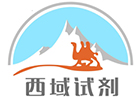
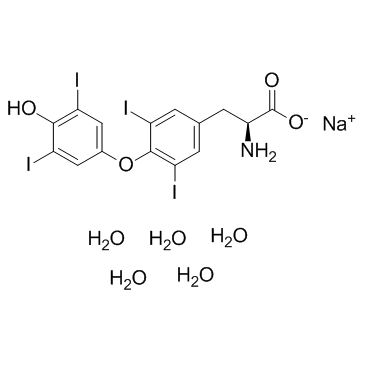
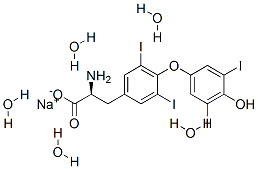
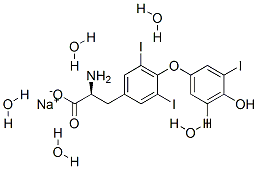
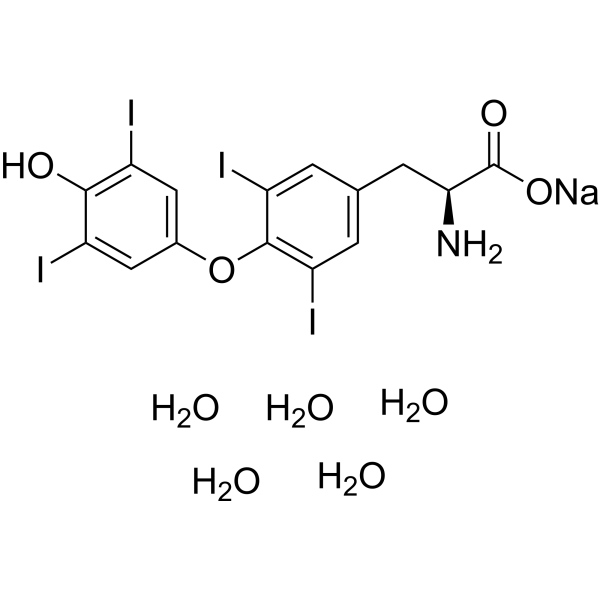





 浙公网安备 33010802013016号
浙公网安备 33010802013016号